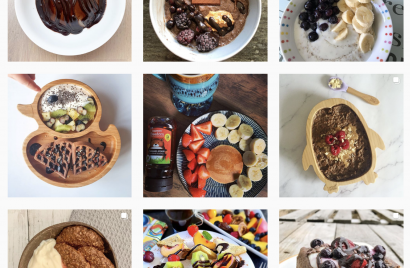
‘Subculture is the most powerful tool we have’
Louis Persent, Co-Founder and Creative Director at Weirdo on the power of embracing the niche

James Hickman, Strategy Director at Walker on the importance of long-term strategic thinking at a corporate level when it comes to resetting the dial on authentic representation.

Marketing can be tough. We’re in an over-saturated and fragmented industry where we have collectively shifted the emphasis of branding from USPs to having to differentiate with identity through the addition of signs, experiences, values and meanings. Representation and authentic lived experience have too often become a lazy identity shortcut rather than being true to the brand and company culture.
It’s up to us as an industry to reset the dial, but that requires long-term strategic thinking at a corporate level, not short-term box-ticking.
Let’s not pretend that as an industry we can’t and don’t often get away with treating authenticity as a bad PR-avoiding, box-ticking exercise. As an agency we pride ourselves on our approach to representation in our work. We opt for brand complementary street-casting in our creative including our latest Pukka TV ads; we believe in the power of grass roots micro-influencing and we launched our BAME academy in 2019 to help tackle our own diversity issue. Oh, how very woke. We know it’s not enough.
80% of the ad industry lives in London; 87% of the UK population doesn’t.
James Hickman
80% of the ad industry lives in London; 87% of the UK population doesn’t. We've got our ear to the ground, and that ground happens to be a sandy beach. Being based outside of the capital gives us a head-start with being in touch with everyday real-life, warts and all. We’ve embraced WhatsApp Ethnography as a fundamental strategic building block for many of our clients in understanding who they are talking to.
Asking people to record themselves regularly on film and sharing it in a closed group, not only breaks down artificial barriers of how they live their life, but links directly to their intrinsic comms habits. Brands can use this, amongst many other methods, to better reflect lived experience. Of course, we have seen this come to the forefront in, arguably, far too many lockdown TV spots and it’s fair to say, this ‘real reflection’ alone is not enough.
Perhaps the shift to WFH will help reset the industry, getting us out of the bubble and self-indulgence of awards and peer recognition we are so comforted by, and closer to the communities we regularly leave behind on early morning commutes.
However, the reality is that industry representation and authenticity may well seem easy as isolated box ticks. But merging the two is where the ad industry could well be backing itself further into a dark corner.
We continue to paint this perfect picture of a brand and the diverse and real culture it represents, and in advertising pitches we neatly and systematically package, prepare and control this narrative. Focusing on our audiences’ differences and weaknesses has all become a little bit ‘how do you do, fellow kids’. But what about brand weaknesses and differences?
We need to re-humanise brands. We need to make them less perfect, less polished and yes, perhaps even untick some boxes, until we can once again tick them with authority.
By being more real as brands, it gives us more license to actively represent the imperfection of true lived experiences.
James Hickman
The Pratfall Effect. By making a mistake or admitting to a mistake, we become more likeable. The classic examples include Marmite admitting that many people do in fact hate their product, or Guinness accepting it takes a rather annoyingly long time for a pint to settle. Even in the early days of my career we deliberately put spelling mistakes in ads to make us feel more approachable as a company.
Perhaps in future the brand guidelines we spend hours crafting should be less contrived and more free to explore faults and failings. We should openly celebrate our business challenges, rather than try and hide them under false narratives. In turn, by being more real as brands, it gives us more license to actively represent the imperfection of true lived experiences.

From day one working with Sweet Freedom, a start-up healthy fruit syrup company, we made the strategic decision to reject the fake, polished and perfect, and sometime intimidating, world of food on Instagram. Instead we celebrated the failures, the simplest creations and the less pretty executions of our product. After all we didn’t care because it all complemented our mission to make healthy taste great, which should always be open to everyone. By being flawed, transparent and real ourselves, our UGC campaign took off, submerging ourselves into authentic ‘micro-hashtag trends’ and helping reach typically hard to reach sub-cultures like British Asian / niche diets. Ultimately that gave us the foothold for mass appeal which in turn resulted in some major distribution wins.
For too long the marketing industry has caricatured older audiences, creating a totally misguided perception of retirement. When you consider only 5.6% of the ad industry is even over 50, it’s hardly surprising. We didn’t want to hide this industry weakness, and instead celebrated this by subverting the perception of what it’s like to be over 65 in winter. By juxtaposing stereotypical cold, lonely winters, with warm, sociable communities, we could position retirement property as an exciting new chapter, rather than something to worry about.

By re-thinking how a brand should look and behave, in time representation and authenticity starts to come through organically. Real attracts real; you won’t be ticking diversity boxes, because your brand will be ‘living’ the boxes.
Our long-term goal with our brand positioning for Pukka, ‘The People’s Pie’ is to be fully submerged in culture and accepting our place and reality as ‘just a good pie’. And if that means shoving it in a white bap and calling it a Wigan Kebab, then so be it. We won’t artificially protect our football fan heartland, instead we’ll be out on the streets leaving our brand content in the hands of a diverse, fickle and beautifully un-predictable UK culture.
As strategists, creatives and content creators, our job should be creating change at corporate level and at the very roots of each brand we work on, and then we can start to see authentic change in advertising.
Yes, this is a slow-burn strategy but in a year where planning ahead sucks, it’s nice to think long term, right?
James Hickman is Strategy Director at Walker and has worked in Johannesburg, London and now Bournemouth, specialising in consumer behaviour, the art of semiotics and good old-fashioned brand strategy. He’s worked on a wide range award-winning and effective campaigns for the likes of Cadbury, P&O Cruises, Mentos, Pukka Pies, Fruittella and Universal Pictures. Outside of work, you’ll usually find him on a bike, in the sea, or hanging out with his dog Arlo.
Looks like you need to create a Creativebrief account to perform this action.
Create account Sign inLooks like you need to create a Creativebrief account to perform this action.
Create account Sign in